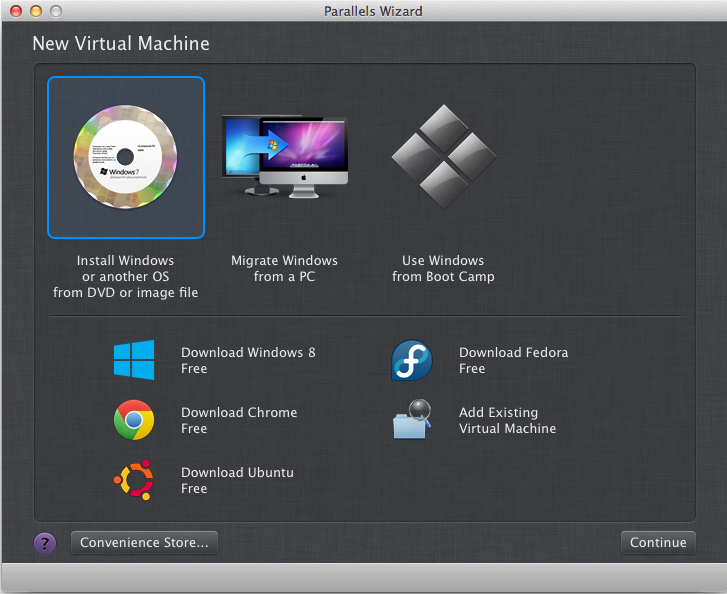

- Pass usb device to windows parallels for mac how to#
- Pass usb device to windows parallels for mac for mac#
- Pass usb device to windows parallels for mac mac os x#
Now Parallels Desktop supports true drag and drop functionality, so you can seamlessly drag and drop files and folders from Windows to Mac OS X and vice versa. You don't even have to realise you are using Windows! Parallels Desktop's Coherence feature displays Windows applications as if they were running natively on your Mac. See this tutorial showing how easy it is to! Once installed, using Windows on a Mac is seamless and transparent. The necessary Windows hardware drivers are installed and configured automatically. Installation is an easy one-click process. You get full native hardware performance, because Parallels Desktop is not an emulation. Parallels Desktop allows Intel Mac users to run Windows-only applications like Internet Explorer 7, Microsoft Office, Quicken and more at full speed. Once this choice is made, Parallels tends to remember/respect it on every subsequent reconnect. When I plug in a USB drive while my VM is running, Parallels offers a dialog lightbox asking whether the USB drive should associate with the Mac or the VM. Discussion in 'Parallels Desktop for Mac' started by irieblue, May 25, 2006.
Pass usb device to windows parallels for mac for mac#
Pass Usb Device To Windows Parallels For Mac.If you wish to remove the USB device from the passthrough list, click on the USB device in the list and then click on the little red minus sign on the right hand side. In the above screen shot it is appearing as “NO NAME”.Īll done! Incidentally, if you want a USB thumbdrive to work in both Windows and OS X you want it formatted into FAT32 or ExFAT rather than NTFS or Mac OS X Extended. Now, if you look in Finder in Mac OS X you won’t see the drive:Ĭlosing down the VM, though, and unplugging/reinserting the drive will make it show up as normal: …and it should be picked up as if it were plugged into a physical Windows computer:Īll done. Otherwise, you can now plug your USB device in: If you have only just selected USB 2.0 for the first time you will probably see the above screen. Safely remove the USB device from your computer and then start the Windows virtual machine. Click OK, and go back to the main Virtualbox screen. The USB controller has been moved to USB 3.0 in the above screen shot – ignore that, as USB 3.0 currently does not work on Windows 7 VMs.

Now you should see it listed under “USB Device Filters”. In this instance we are selecting the SanDisk Cruzer Blade. If the virtual machine is closed down when you plug in the USB device the normal Mac OS X system will read the USB device as usual.Ĭlick on the icon on the right that has a little green plus and you should see a listing of USB devices that are eligible for passthrough: In a nutshell, we will be setting up the specific USB devices we select on this screen to be passed through to the Windows VM whenever they are plugged in while the VM is powered on. Then plug in your USB device that you want to pass through.

Nobody wants to be using USB 1.1 (slow) so click on USB 2.0: Open up Virtualbox and make sure that the Windows VM is not running:Ĭlick on “Settings” at the top and you should see this screen:Ĭlick on “Ports” (third from the right hand side in the icon menu at the top):
Pass usb device to windows parallels for mac how to#
Running a Mac with Windows running in a Virtualbox virtual machine? Here’s how to pass through a USB device so that whenever the VM (Virtual Machine) is running and the USB device is plugged into a USB port it appears in the Windows VM and not in Mac OS X.


 0 kommentar(er)
0 kommentar(er)
